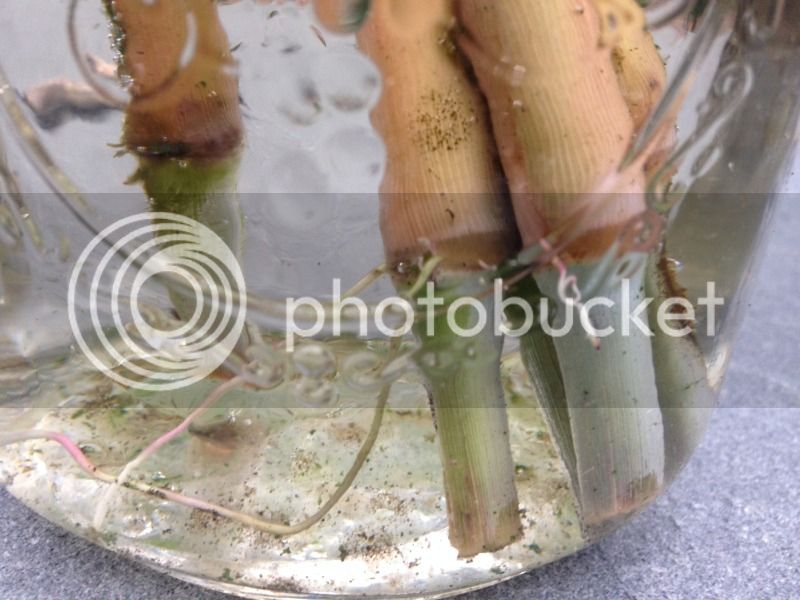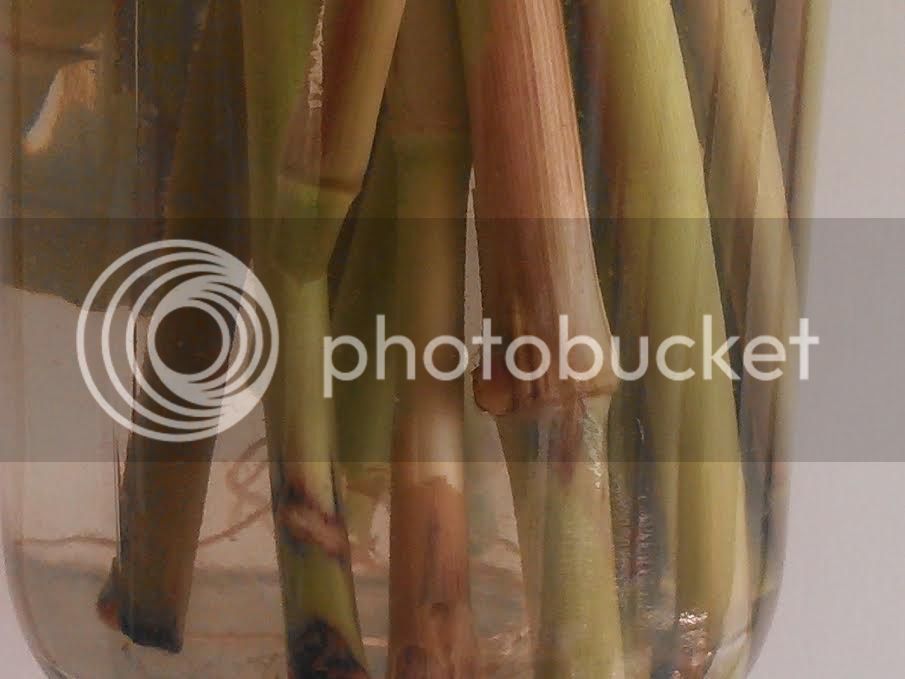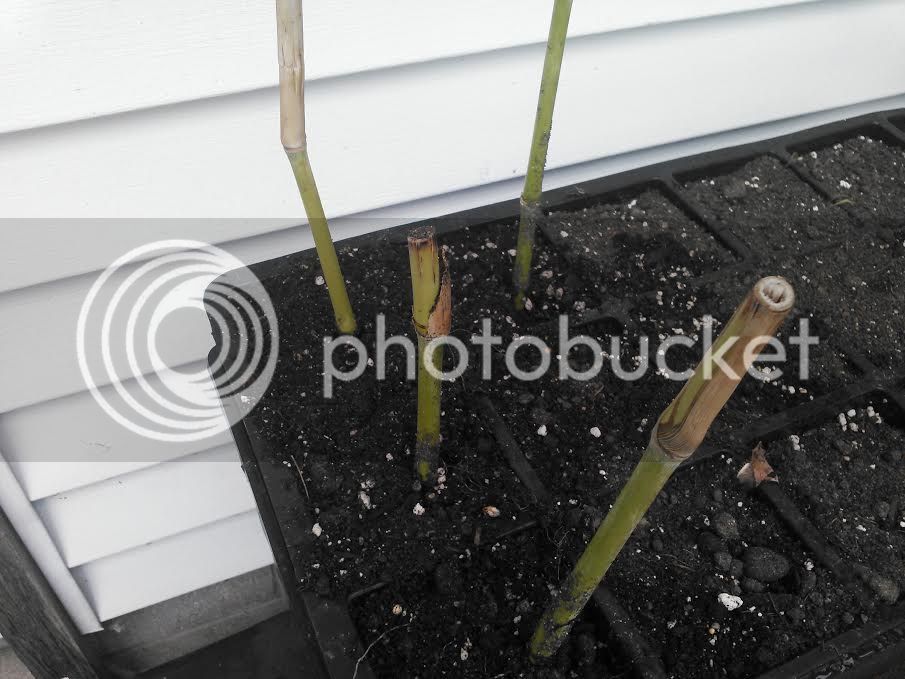Found this online:
Abstract
The sterile triploid Miscanthus × giganteus is capable of yielding more biomass per unit land area than most other temperate crops. Although the yield potential ofM. × giganteus is high, sterility requires all propagation of the plant to be done vegetatively. The traditional rhizome propagation system achieves relatively low multiplication rates, i.e. the number of new plants generated from a single-parent plant, and requires tillage that leaves soil vulnerable to CO2 and erosion losses. A stem-based propagation system is used in related crops like sugarcane, and may prove a viable alternative, but the environmental conditions required for shoot initiation from stems of M. × giganteus are unknown. A study was conducted to investigate the effect of temperature, illumination and node position on emergence ofM. × giganteus shoots. Stems of M. × giganteus were cut into segments with a single node each, placed in controlled environments under varied soil temperature or light regimes and the number of emerged shoots were evaluated daily for 21 days. At temperatures of 20 and 25 °C, rhizomes produced significantly more shoots than did stem segments (P = 0.0105 and 0.0594, respectively), but the difference was not significant at 30 °C, where 63% of stems produced shoots compared to 80% of rhizomes (P = 0.2037). There was a strong positive effect (P = 0.0086) of soil temperature on emergence in the range of temperatures studied here (15–30 °C). Node positions higher on the stem were less likely to emerge (P < 0.0001) with a significant interaction between illumination and node position. Planting the lowest five nodes from stems of M. × giganteus in 30 °C soil in the light resulted in 75% emergence, which represents a potential multiplication rate 10–12 times greater than that of the current rhizome-based system.








